Related Research Articles

Zambales, officially the Province of Zambales, is a province in the Philippines located in the Central Luzon region. Its capital is Iba, which is located in the middle of the province. Zambales borders Pangasinan to the north and northeast, Tarlac to the east, Pampanga to the southeast, Bataan to the south and the South China Sea to the west. With a total land area of 3,830.83 square kilometres (1,479.09 sq mi), Zambales is the second largest among the seven provinces of Central Luzon after Nueva Ecija. The province is noted for its mangoes, which are abundant from January to April.

Tarlac, officially the Province of Tarlac, is a landlocked province in the Philippines located in the Central Luzon region. Its capital is the city of Tarlac. It is bounded on the north by the province of Pangasinan, Nueva Ecija on the east, Zambales on the west and Pampanga in the south. The province comprises three congressional districts and is subdivided into 17 municipalities and one city, Tarlac City, which is the provincial capital.

The Ilocos Region, designated as Region I, is an administrative region of the Philippines. Located in the northwestern section of Luzon, it is bordered by the Cordillera Administrative Region to the east, the Cagayan Valley to the northeast and southeast, Central Luzon to the south, and the South China Sea to the west.

Central Luzon, designated as Region III, is an administrative region in the Philippines, primarily serving to organize the 7 provinces of the vast central plains of the island of Luzon, for administrative convenience. The region contains the largest plain in the country and produces most of the country's rice supply, earning itself the nickname "Rice Granary of the Philippines". Its provinces are: Aurora, Bataan, Bulacan, Nueva Ecija, Pampanga, Tarlac and Zambales. Pangasinan was formerly a province of Central Luzon before President Marcos signed Presidential Decree No. 1, 1972, incorporating it into Ilocos Region. Additionally, the province of Aurora was part of the defunct political region Southern Tagalog when the region was divided into Calabarzon and Mimaropa, upon the issuance of Executive Order No. 103, dated May 17, 2002, by then-President Gloria Macapagal Arroyo, which transferred Aurora to Central Luzon.

Anda, officially the Municipality of Anda, is a 3rd class municipality in the province of Pangasinan, Philippines. Unique in this part of the province, The Sambalic language of Bolinao or Binubolinao is primarily spoken in the municipality and the adjacent town of Bolinao. According to the 2020 census, it has a population of 41,548 people.

Iba, officially the Municipality of Iba, is a 1st class municipality and capital of the province of Zambales, Philippines. According to the 2020 census, it has a population of 55,581 people.
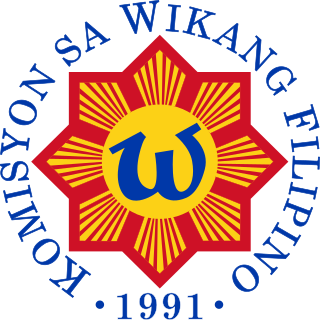
The Commission on the Filipino Language (CFL), also referred to as the Komisyon sa Wikang Filipino (KWF), is the official regulating body of the Filipino language and the official government institution tasked with developing, preserving, and promoting the various local Philippine languages. The commission was established in accordance with the 1987 Constitution of the Philippines.
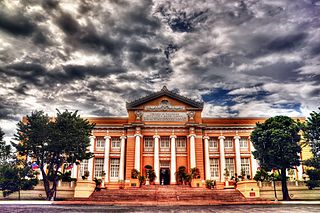
Pangasinan, officially the Province of Pangasinan, is a coastal province in the Philippines located in the Ilocos Region of Luzon. Its capital is Lingayen. Pangasinan is in the western area of Luzon along Lingayen Gulf and the South China Sea. It has a total land area of 5,451.01 square kilometres (2,104.65 sq mi). According to the 2020 census, it has a population of 3,163,190. The official number of registered voters in Pangasinan is 1,651,814. The western portion of the province is part of the homeland of the Sambal people, while the central and eastern portions are the homeland of the Pangasinan people. Due to ethnic migration, the Ilocano people settled in the province.

Bolinao, officially the Municipality of Bolinao, is a 1st class municipality in the province of Pangasinan, Philippines. According to the 2020 census, it has a population of 83,979 people.

Tarlac City, officially the City of Tarlac, is a 1st class component city and capital of the province of Tarlac, Philippines. According to the 2020 census, it has a population of 385,398 people.

The Sambal people are a Filipino ethnolinguistic group living primarily in the province of Zambales and the Pangasinense municipalities of Bolinao, Anda, and Infanta. The term may also refer to the general inhabitants of Zambales. They were also referred to as the Zambales during the Spanish colonial era.
The Pangasinan people, also known as Pangasinense, are an ethnolinguistic group native to the Philippines. Numbering 1,823,865 in 2010, they are the tenth largest ethnolinguistic group in the country. They live mainly in their native province of Pangasinan and the adjacent provinces of La Union and Tarlac, as well as Benguet, Nueva Ecija, Zambales, and Nueva Vizcaya. Smaller groups are found elsewhere in the Philippines and worldwide in the Filipino diaspora.
The Bolinao language or Binubolinao is a Central Luzon language spoken primarily in the municipalities of Bolinao and Anda, Pangasinan in the Philippines. It has approximately 50,000 speakers, making it the second most widely spoken Sambalic language. Most Bolinao speakers can speak Pangasinan and/or Ilocano. Ethnologue reports 510 monolinguals for this language.
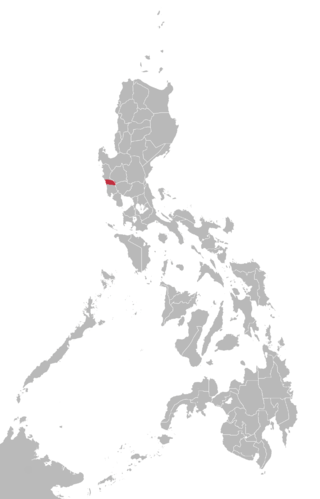
Botolan is a Sambalic language spoken by 32,867 Sambal, primarily in the Zambal municipalities of Botolan and Cabangan in the Philippines. Language status is 5 (developing).
The Indi language or Mag-indi is a Sambalic language with around 5,000 speakers. It is spoken within Philippine Aeta communities in San Marcelino, Zambales, and in the Pampango municipalities of Floridablanca and Porac. There are also speakers in Lumibao and Maague-ague.
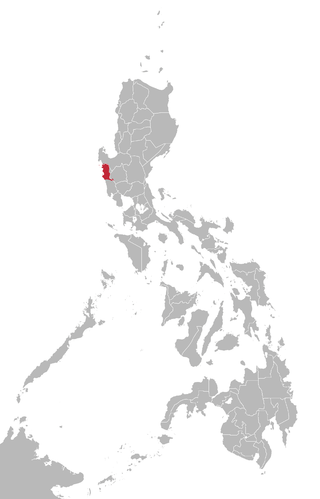
Sambal or Sambali is a Sambalic language spoken primarily in the Zambal municipalities of Santa Cruz, Candelaria, Masinloc, Palauig, and Iba, in the Pangasinense municipality of Infanta, and areas of Pampanga in the boundary with Zambales in the Philippines; speakers can also be found in Panitian, Quezon, Palawan and Barangay Mandaragat or Buncag of Puerto Princesa. The speakers of the language are decreasing due to the fact that many of the speakers are shifting to Tagalog & Ilocano.
The Antsi (Anchi) language or Mag-antsi is a Sambalic language with around 4,200 speakers. It is spoken within Philippine Aeta communities in the Zambal municipalities of Botolan, San Marcelino, and Castillejos; in the Tarlaqueño municipalities of Capas and Bamban; in Mabalacat, Pampanga; and in Angeles City. The use of the language is declining as its speakers are shifting to Kapampangan. The language is mutually intelligible with Mag-Indi Ayta (77%) and Ambala Ayta (65%).
Abellen, Abenlen, Aburlin, or Ayta Abellen, is a Sambalic language. It has about 3,500 speakers and is spoken in a few Aeta communities in Tarlac province, Philippines. Ayta Abellen itself is part of the Sambalic language family in the Philippines and is closely related to not only the five other Ayta dialects but also the Botolan dialect of Sambal. Ethnologue reports 45 monolinguists.
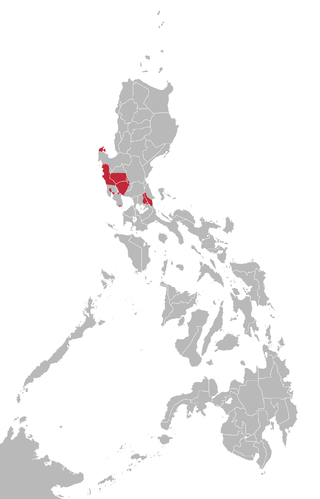
The Central Luzon languages are a group of languages belonging to the Philippine languages. These are predominantly spoken in the western portions of Central Luzon in the Philippines. One of them, Kapampangan, is the major language of the Pampanga-Mount Pinatubo area. However, despite having three to four million speakers, it is threatened by the diaspora of its speakers after the June 1991 eruption of that volcano. Globalization also threatened the language, with the younger generation more on using and speaking Tagalog and English, but promotion and everyday usage boosted the vitality of Kapampangan.
The Negrito peoples of the Philippines speak various Philippine languages. They have more in common with neighboring languages than with each other, and are listed here merely as an aid to identification.
References
Citations
- ↑ "PSGC Interactive, Zambales". National Statistical Coordination Board. Archived from the original on 2011-06-04. Retrieved 2011-05-11.
- ↑ Stone 2008
- ↑ "Sambal". National Commission for Culture and the Arts. Archived from the original on 2008-01-21.
- ↑ Reed, William Allan (1904). Negritos of Zambales. Bureau of Public Printing, U.S. Government Printing Office. pp. 24–29.
- ↑ The Historical Indúng Kapampángan: Evidence from History and Place Names
- ↑ "National Philippine Proverb in Various Philippine Languages". Carl Rubino's homepage.
Bibliography
- Stone, Roger (2008). "The Sambalic Languages of Central Luzon". Studies in Philippine Languages and Cultures. 19: 158–183.